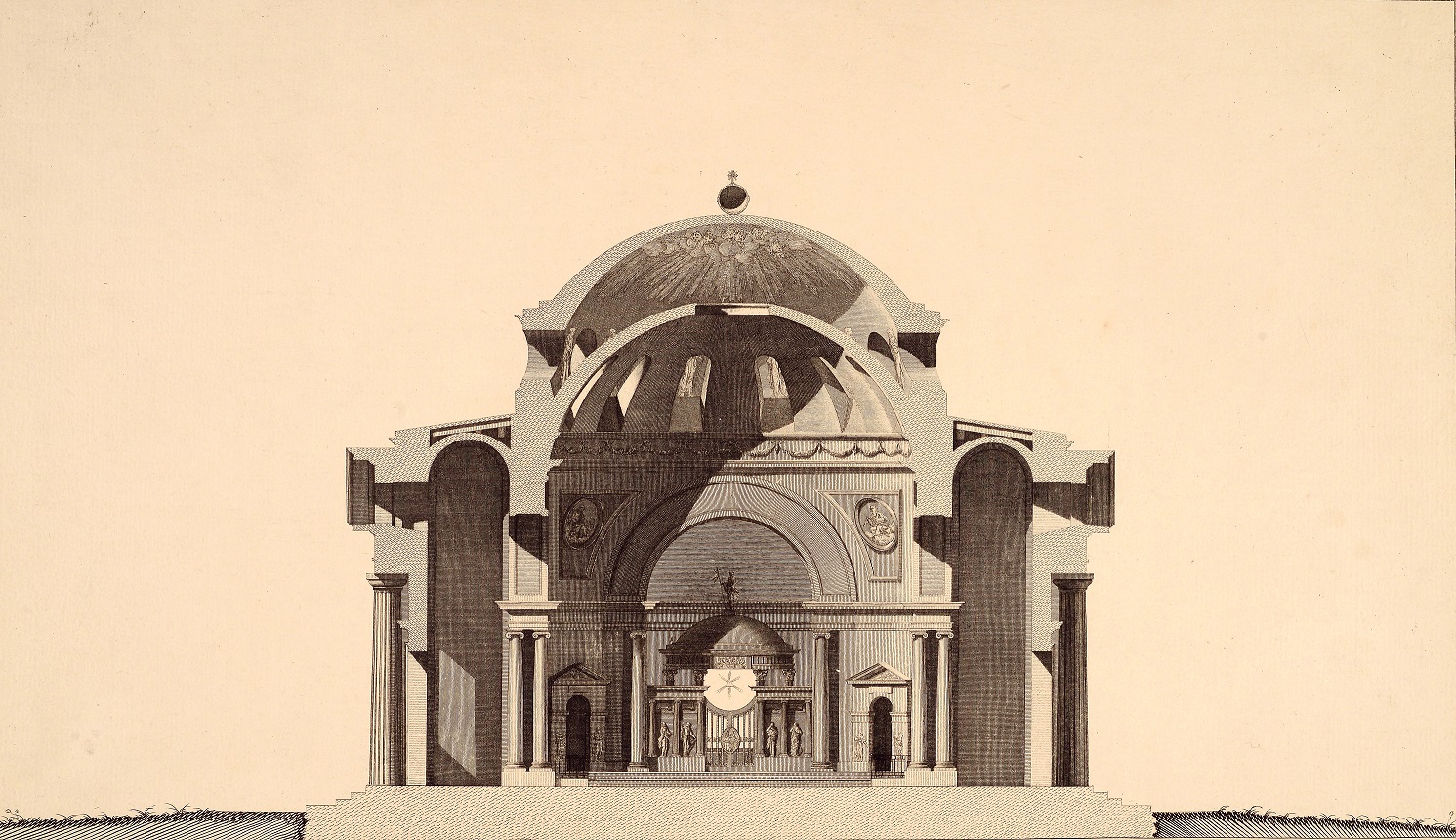
St. Joseph's Cathedral in Mogilev. Cross section.
JUNE 8 – SEPTEMBER 23 / MAIN EXHIBITION HALL
On June 8, the ZARYA Center for Contemporary Art will open “Architecture: Doomed to Optimism,” an exhibition organized together with the Moscow Museum of Contemporary Art. The show follows the history of Russian architecture of the 20th and 21st century, and will be on view through September 23. Admission is free of charge.
“While this is the first time Zarya has tackled the theme of Russian architecture, we approached the issue with special care. As we are located in Primorye, far from the historical, cultural and economic centers, when we look around our urban landscape, we can see that we’re not in Asia, where we are sited geographically, but rather in the classic Post-Soviet space where we reside mentally. There is always this conversation on politics and economics conducted through the architecture of cities and countries. We were interested in looking at architecture both as a social document, and as an incredibly important art form, to whose artifacts we have entrusted our everyday life,” explains Chief Curator of ZARYA Center for Contemporary Art, Alisa Bagdonaite.
The exhibition, “Architecture: Doomed to Optimism,” offers a kind of studio of the archetypal architect-as-hero, always striving to find the balance between an artistic ideal and pragmatics – a titan, condemned to the profession of prolonging the future. His resolution is dictated by an honest acceptance of the impossibility of ever embodying architecture itself “in the flesh”; it is always either taking on different interpretations in its realization or it remains an ephemeral idea in the mind of the artist. For this reason, the audience is invited to consider not the objects as they are, but rather the architect’s way of thinking. This presentation brings together works by some of the most renowned Russian practitioners, spanning multiple genres: painting, drawings, conceptual models and mock-ups, written manifestos, installations, working sketches, and much more.
The exhibition script is didactic in its own way, carefully laying out the history of Russian architecture from the 20th and 21st century. To throw off the balance, this history is then contrasted with a case study of the self-taught architect, aristocrat and diplomat, the Palladian Nikolay Lvov, who lived in the Age of Enlightenment. His old engravings and sketches allow the audience not only to bask in the graphic ideals of that era, but also to appreciate how Lvov considered the slender stalks of the columns as equivalent to the harmony of the heating systems, the construction of the stove on par with the house it heated.
Leveling out the didactic elements is the kaleidoscope of heroes whose work this exhibition showcases. Among them one finds Konstantin Melnikov and Alexander Brodsky, Evgeny Vasiliev and Leonid Pavlov, the collective behind the Moscow Palace of Pioneers and the architectural bureau Project Meganom, Alexander Rodchenko, Ilya Chashnik, and El Lissitzky. An important feature of the objects on display is that each serves as a tool for thinking about another work, which exists somewhere else in the vastness of Russia, whether only in the mind of its creator, or at some point realized in concrete form in a specific context, down to the last detail. These objects are joined by the analysis of the works of past architects by our current contemporaries (for example, the installation Communal Avant-Garde or the photo-project, Severnoe Chertanovo.) As a true pedagogical coup, a fragment from the wall of Konstantin Melnikov’s own home has been brought to ZARYA CCA. It offers a superb primer in its own construction, revealing the work with the material and value of its apertures, thus using the outer shell to uncover the inner essence of architecture.
For Reference:
The curator of this exhibition, Maria Fadeeva, is a journalist, architectural critic, researcher, curator, and instructor of Professional Communications at the Moscow Architecture School. In 2004, she graduated from the Moscow Architecture Institute. During the four years of her studies, she worked as an architect. Since 2003, she has written for various publications on architecture, design, and urban development. She is one of the authors of the travel guide, Novaya Moskva 4 (“New Moscow 4”) and a co-author of the educational initiative Svoboda Dostupa (“Freedom of Access”), as well as a member of the team for ARKhIWOOD. Additionally, she is a member of the Center for the Avant-Garde on Shabolovka and has developed multiple tour programs dedicated to the architecture of the 20th and 21st centuries.